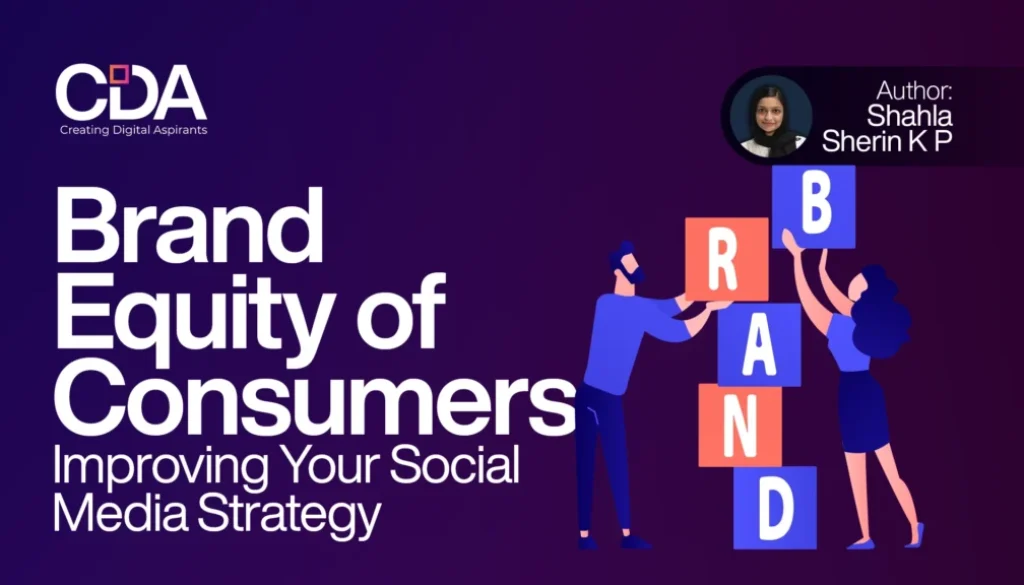Brand Equity of Consumers Towards Durable Products
What makes your brand stand out in this competitive industry? A strong brand strategy is necessary. Since the beginning of liberalization in 1991, the consumer durables sector in India has changed. In the contemporary period, products have experienced remarkable growth in range, sophistication, and market share. And more than ever, a company’s brand is its most valuable asset. These days, brands are the main sources of income. Even though products may be manufactured in factories, brands are created in the minds of consumers.
So, What impression does your brand currently have? Are you utilizing your brand equity to its full potential? Remember that the degree to which your audience identifies with your brand determines the market value of your firm.
If you’re ready to grow your brand, you must reconsider your strategy. Let’s now discuss building a long-lasting brand!
One of the most popular and potentially important marketing concepts to arise in 1980 was brand equity. In the 1980s, University of California, Berkeley marketing professor David Aaker developed the concept of brand equity for the first time.
Table of Contents

Branding
Since ancient times, brands have been used to set one producer’s products apart from another. The Old Norse term brandr, which means “to burn,” is where the word brand originated. The AMA, which stands for the American Marketing Association, defines a brand as “a name, phrase, sign, representation, designs, or any mixture of them, meant for recognizing the services and products of a single business or collection of sellers and to distinguish them from those of competitors.”
Branding is about using brand equity to give goods and services more power. Although several different views of brand equity may prevail, most observers agree that brand equity should be defined in terms of marketing effects that are uniquely attributable to a brand.
Meaning of Brand
A brand is a product, service, person, company, or concept that has characteristics like a name, symbol, etc to be differentiated from others in the market. Differentiation and identification are achieved while using a brand.
Building a Strong Brand: The Four Steps of Brand Building
- Make sure that buyers recognize the brand and associate it with a certain product category or customer demand.
- Deliberately connect a variety of both tangible and intangible brand associations with particular attributes to firmly define the entirety of the brand’s meaning in the eyes of consumers.
- Elicit from customers the appropriate reactions to this brand identification and significance.
- Convert consumer reactions to the brand to establish a strong, dynamic bond of loyalty.
Brand Equity
It is a marketing term to describe the brand value. The value is determined by consumer perception of and experience with the brand. Brand equity is an intangible asset that depends on the associations made by the consumer. It is measured based on how much a customer is aware of the brand. The value of a company’s brand equity can be calculated by comparing the expected future revenue from the branded products with the expected future revenue from equivalent non-branded products.

The Four Dimensions of Brand Equity
- BRAND AWARENESS
Awareness is a key determinant in almost all brand equity models. It is defined as the customer’s ability to recall and recognize the brand. It is reflected by their ability to identify the brand under different conditions and link the brand name, logo, symbols, and so forth to certain associations in memory. Top of mind, brand dominance, brand knowledge, and brand opinion are other higher levels of awareness.
- BRAND ASSOCIATION
It is one of the major components of brand equity. Buying decisions and commitment to a brand are based on brand connections. It consists of brand-related thoughts, feelings, perceptions, and attitudes and is anything linked in memory to a brand.
- PERCEIVED QUALITY
It is a dimension of brand equity rather than part of overall brand associations. It is the customer’s judgment about a product’s overall excellence that is different from the objective quality. Farquhar and Keller considered perceived quality as the ‘core or primary’ facts of consumer-based brand equity as it has been associated with the willingness to pay a price premium, brand purchase intent, and brand choice.
- BRAND LOYALTY
Loyalty is a core dimension of brand equity. Brand loyalty is defined as the attachment that a customer has to a brand. Behavioral loyalty is linked to customer behavior in the marketplace which can be indicated by several repeated purchases or commitment to rebuy the brand as a primary choice.
Customer Based Brand Equity
Keller’s views on brand equity are customer-oriented. Brand equity is seen from the viewpoint of the consumers. Customer-based brand equity is conceptualized as the ‘differential effect’ of ‘brand knowledge’ on ‘consumer response’ to the marketing of a brand. There are three key elements in Keller’s framework of brand equity:
1. Differential effect
2. Brand knowledge
3. Customer response
Consumer Behaviour
It is characterized as “the decision-making process and the physical actions people take when determining, buying, and utilizing, goods and services.” The single most common definition of consumer behavior is “the study of individuals, groups, or organizations and the processes they use to choose, acquire, and discard goods, experiences, or concepts to satisfy needs, as well as the effects that these processes have on the consumer and society.” It combines aspects of sociology, psychology, anthropology, social psychology, and economics. It makes an effort to figure out how consumers, individually as well as collectively, make decisions.
Consumer Durables
Any product that is made to be used for an extended period and is purchased by customers is considered consumer-durable. Durable goods are those that don’t wear out quickly, yielding utility over time rather than at once.
Why it is important to understand brand equity for durable products?
These days, brands are becoming the most valuable assets that businesses can possess. Brands in this context are new business warriors. When products are not differentiated in the factories brands are differentiated in the customers’ minds. Among the competitive durable products, consumers face uncertainty and risk about product quality during the purchase time and it is closely related to highly useful durable products. From the standpoint of the consumer, brand equity is helpful since it indicates areas where research can help support management decision-making as well as particular suggestions for marketing strategies and methods.
Several firms had been offering products in a consumer-durable market. Hence, the consumers had greater options to choose from many. The firms have to build strong brand equity on their products to compete with others. Understanding consumer behavior would help firms formulate strategies to cater to brand equity to consumers and increase their market share. Consumer brand preferences were found to change rapidly, especially in a dynamic environment.
Conclusion
In this durable environment brand equity is more than a word, it is the path of trust, loyalty, and quality. When a brand gives exceptional value to customers by providing valuable durables products it makes customers loyal to that brand and makes them promoters for our company.
Brand equity and its effect on consumer durable products involve determining the factors that are influencing the brand equity of consumer durables. It explores the brand choice behavior of the consumers on durable products and the factors that are influencing the purchasing decisions of the consumers.
Author Info
Shahla Sherin, a Freelance digital marketer in Calicut
Learner of CDA Digital Marketing Training Institute in Calicut




